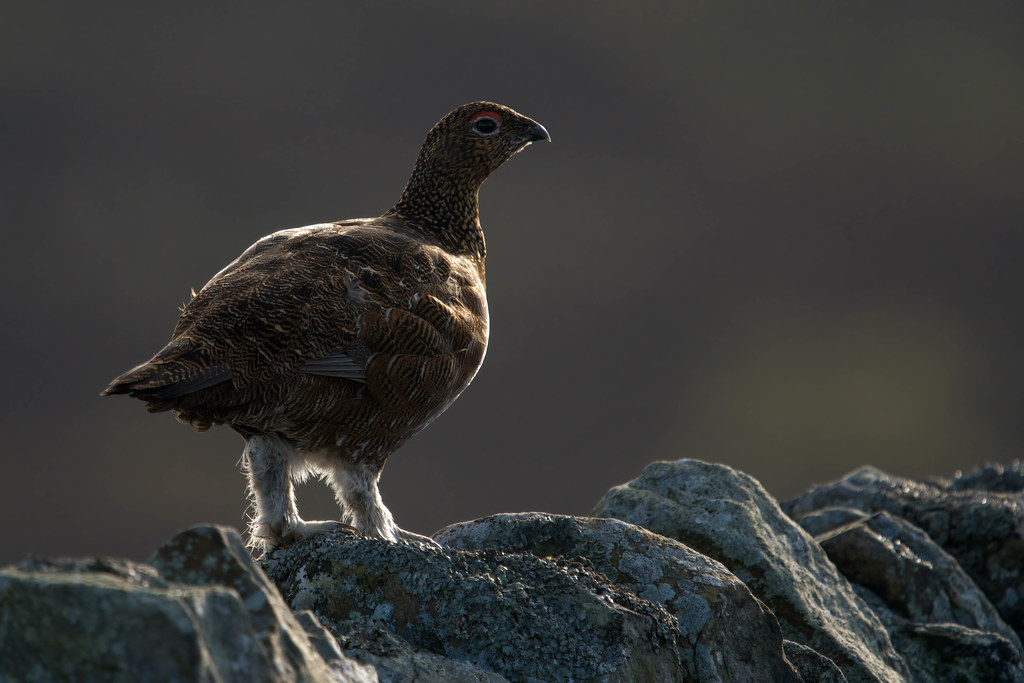
Tim writes: I took this photo in mid-October while out on the Peak District Moors. It was standing on a drystone wall and was just catching the first rays of the early morning sun. This photo shows the feathered legs and feet which gives rise to its scientific name Lagopus, meaning hare-footed. There are a few interesting things about the name Grouse. First the name was originally applied to Black Grouse. John Ray in 1678 called Red Grouse “Redgame”, but he called Black Grouse “Heathcock, or Black Game, or Grous”(sic). It was Thomas Pennant nearly a hundred years later in 1776 who differentiated the two species as Red and Black Grouse. Interestingly this website says the name grouse was originally applied to Moorhen, which is clearly a confusion with Moorcock, an old name for Black Grouse.
Grouse is one of those few words where the singular is the same as the plural, and you may have noticed that Ray left the e off the end suggesting that grous may have been the plural. And during the 16th century, more than a hundred years before Ray’s “grous” there are references to “grows and peions” (grouse and pigeons) in 1531 and “grewes” in 1547 so it is likely that grow and grew were the singular terms for grows and grewes. And “Grue” is an Old French word (which itself derives from late Latin “gruta”) for field hens (gallinae campestres), which were probably wild game birds (partridges?). But the name has not survived in French, probably because of confusion for their word for Crane (grue, Latin grua). The original name for grouse was probably imitative of the call.
[registration_form]
Nice willow ptarmigan.
The familiarity with the bird, as noted by the above writers, local dialect names, sporting literature etc., show the bird must have been much more common, pre- management days, than on unmanaged ground today.